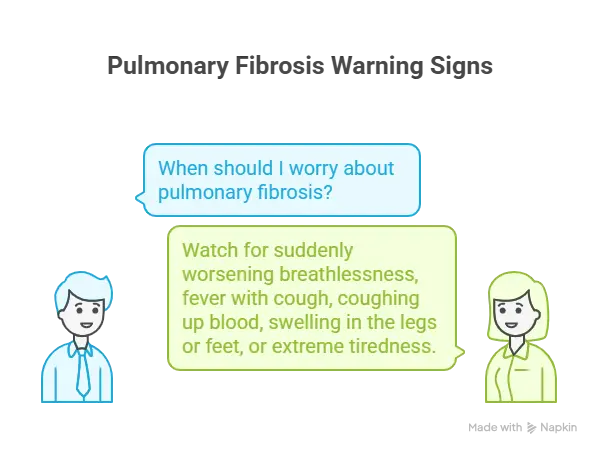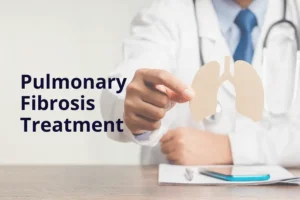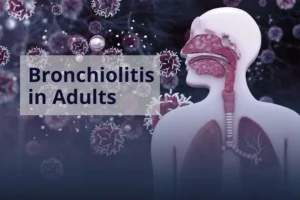
Understanding Pulmonary Fibrosis Treatment: A Complete Guide for Families
As a chest specialist practising in Nagpur for over twelve years, I have had the privilege of helping hundreds of families understand pulmonary fibrosis treatment. When families first visit my clinic, they often feel overwhelmed by medical terms and treatment options. I believe every family deserves clear, simple explanations about this condition and the hope that comes with proper treatment.
What Is Pulmonary Fibrosis? A Simple Explanation
Imagine your lungs as soft, stretchy balloons that expand and contract with each breath. In pulmonary fibrosis, these lung tissues gradually become thick and stiff, much like old leather rather than soft rubber. This makes it harder for your lungs to take in oxygen and deliver it to your body.
Think of it this way – if you have ever tried to blow up a very thick, stiff balloon, you know how much more effort it takes compared to a thin, flexible one. This is what happens to breathing when someone has pulmonary fibrosis. The lungs have to work much harder to do their job.
This condition affects many families across Maharashtra, and while it is serious, there are many ways we can help manage it and maintain a good quality of life.
Why Does This Happen? Common Causes of Pulmonary Fibrosis
In my practice, I see pulmonary fibrosis develop for several reasons:
Sometimes we know the cause:
- Long-term exposure to dust, particularly in construction or industrial work
- Certain medications taken for other health conditions
- Autoimmune diseases, in which the body's defense system gets confused
- Previous lung infections that did not heal properly
Sometimes we do not know why it happens: This is called “idiopathic” pulmonary fibrosis, meaning we cannot identify a specific reason. This uncertainty can be frustrating for families, but it does not change our ability to provide effective treatment.
Treatment for Pulmonary Fibrosis: How is it done?
Modern Medicines That Help Slow the Disease
The good news is that we now have excellent medicines that can slow down lung scarring. These are called “anti-fibrotic” medicines – think of them as putting the brakes on the scarring process.
Pirfenidone and Nintedanib are the two main medicines we use. They work like skilled mechanics who can slow down the damage happening in your lungs. While they cannot undo existing scarring, they can significantly slow the formation of new scarring.
These medicines do have some side effects that we monitor carefully:
- Stomach upset (which usually improves by taking medicine with food)
- Skin becoming more sensitive to sunlight (important during Nagpur summers)
- Some people experience loose motions initially
I work closely with each family to find the right dose and manage any side effects. Most patients adjust well to these medicines within a few weeks.
Helping You Breathe Better: Oxygen Support
When your lungs cannot get enough oxygen into your blood, we can provide extra oxygen through a small tube in your nose or a mask. This is not something to fear – it is like giving your body the extra support it needs.
Many families worry that starting oxygen therapy means the condition is very severe, but actually, it often helps people feel more energetic and able to perform daily activities. Some people need oxygen only during exercise or sleep, while others benefit from using it throughout the day.
Breathing Training and Exercise: Pulmonary Rehabilitation
This is like physiotherapy for your lungs and body. A team of specialists teaches you:
- Special breathing techniques to use your lungs more efficiently
- Safe exercises to keep your muscles strong
- Ways to save energy during daily activities
- How to manage breathlessness during the hot Nagpur weather
Many of my patients are surprised by how much better they feel after completing a pulmonary rehabilitation program. It is like learning new skills to work with your changed lungs.
Managing Related Health Issues
Stomach Acid Problems
Many people with pulmonary fibrosis also have stomach acid that comes up into the food pipe (what doctors call GERD or acidity). This acid can potentially make lung scarring worse, so we treat it with medicines that reduce stomach acid production.
Simple things, such as eating smaller meals, avoiding spicy foods, and refraining from lying down immediately after eating, can also significantly help.
Heart Complications
Sometimes, when lungs are stiff, the heart has to work harder to pump blood through them. We carefully monitor your heart health with regular check-ups and echocardiograms (heart ultrasounds). If needed, we have specific medicines to help support heart function.
Preventing Infections
People with pulmonary fibrosis must be particularly vigilant about chest infections, as they can exacerbate breathing difficulties. We recommend:
- Annual flu vaccination
- Pneumonia vaccination
- Good hand washing habits
- Avoiding crowded places during flu season
- Getting prompt treatment for any chest cold or fever
Supporting Your Overall Health
Nutrition and Eating Well
Good nutrition is very important because breathing hard uses up more energy than normal. I often recommend:
- Eating smaller, more frequent meals rather than three large ones
- Including protein-rich foods like dal, eggs, and milk
- Taking nutritional supplements if you are losing weight
- Staying well-hydrated, especially during hot weather
Staying Active Safely
While you may feel breathless, staying active within your limits is important for maintaining strength and energy. Simple activities like:
- Walking for short distances at your own pace
- Light household activities
- Gentle stretching or yoga
- Climbing stairs slowly when needed
The key is listening to your body and not pushing beyond what feels comfortable.
When Should You Worry About Pulmonary Fibrosis? Warning Signs to Watch

I teach all my patients and families to watch for these signs that require immediate medical attention:
- Suddenly worsening breathlessness
- Fever with cough
- Coughing up blood
- Swelling in the legs or feet
- Extreme tiredness that is unusual for you
These could indicate complications that need prompt treatment.
Advanced Treatment Options
For Severe Cases: Lung Transplantation
When pulmonary fibrosis becomes very advanced, some patients may be candidates for lung transplantation. This is a major surgery where damaged lungs are replaced with healthy donor lungs.
Not everyone is suitable for a transplant – it depends on age, overall health, and other factors. The evaluation process is thorough and involves specialists in major cities. While a transplant can provide remarkable improvement for the right candidates, it also requires lifelong medical care and has significant risks.
Comfort Care and Quality of Life
As the disease progresses, our focus shifts to keeping you comfortable and maintaining the best possible quality of life. This is called palliative care and includes:
- Better medicines for breathlessness and discomfort
- Support for you and your family during difficult times
- Help with daily activities and equipment needs
- Emotional, social, and spiritual support
- Planning care according to your wishes and values
This does not mean we are giving up – it means we are focusing on what matters most to you and your family while continuing appropriate medical treatments.
Research and Hope for the Future
Medical research continues to discover new treatments for pulmonary fibrosis. Some promising areas include:
- Combination medicines that might work better together
- Treatments that could actually reverse some lung scarring
- Gene therapy approaches
- Stem cell research
I stay updated on all new developments and discuss relevant research opportunities with suitable patients and families.
Living Well with Pulmonary Fibrosis: Practical Tips
Managing Daily Activities
- Plan important activities for times when you feel most energetic
- Take rest breaks between activities
- Use energy-saving techniques (like sitting while cooking)
- Ask family members for help when needed
- Avoid very hot, humid weather when possible
Emotional Support
Receiving a diagnosis of pulmonary fibrosis can be emotionally challenging for the entire family. It is completely normal to feel worried, sad, or overwhelmed. Consider:
- Talking with a counsellor who understands chronic illness
- Joining support groups (in person or online)
- Sharing feelings with trusted family and friends
- Focusing on what you can still do and enjoy
Family Involvement
In Indian families, health decisions often involve multiple family members, which can be very helpful. I encourage:
- Having a family member attend medical appointments
- Sharing information about the condition with close relatives
- Involving family in understanding medicines and warning signs
- Planning together for any changes that might be needed at home
Regular Medical Care: What to Expect
When you become my patient, we typically meet every three to six months, depending on your condition. During these visits, we:
- Check your breathing with simple lung function tests
- Review your medicines and adjust doses if needed
- Monitor for any side effects or complications
- Discuss any new symptoms or concerns
- Update your family on your progress
I also arrange for regular blood tests to ensure your medicines are not affecting other organs, such as your liver or kidneys.
Financial Considerations and Support
I understand that managing a chronic condition can create financial concerns for families. Some suggestions:
- Many of the newer medicines have patient assistance programs
- Government schemes may help with treatment costs
- Insurance coverage should be explored for all treatments
- Generic versions of some medicines may be available at lower costs
I work with families to find the most cost-effective treatment approaches while maintaining high-quality care.
Questions Families Often Ask
- "Will this condition get worse over time?" Pulmonary fibrosis is generally a progressive condition; however, the rate of progression varies significantly between individuals. With proper treatment, many people maintain stable function for years.
- "Can my children or grandchildren get this?" Most cases of pulmonary fibrosis are not inherited. However, there are rare genetic forms, and we can discuss genetic counselling if there is a family history.
- "Should I stop working?" This depends on your job requirements and personal preferences. Many people continue working with some modifications. We can provide guidance on workplace accommodations if needed.
- "Is it safe to travel?" Travel is often possible with proper planning, including arranging for oxygen if needed and ensuring access to medical care at your destination.
Building a Support Team
Managing pulmonary fibrosis works best when you have a good support team that might include:
- Your pulmonologist (chest specialist)
- Family doctor for routine, A pharmacist to help with medicines
- Respiratory therapist for breathing treatments
- Nutritionist for dietary guidance
- Family members as caregivers and advocates
Good communication between all team members ensures the delivery of the best possible care.
Staying Positive and Finding Hope
While pulmonary fibrosis is a serious condition, I have seen many patients live fulfilling lives for years after diagnosis. The key factors that contribute to better outcomes include:
- Following the treatment plan consistently
- Staying as active as safely possible
- Maintaining good nutrition and overall health
- Having strong family and social support
- Keeping a positive outlook while being realistic about the condition
Making Treatment Decisions Together
Every treatment decision should be made as a partnership between you, your family, and your medical team. I believe in providing complete information so families can make informed choices that align with their values and preferences.
Some families prefer to try every possible treatment, while prioritising comfort and quality of life. Both approaches are valid, and I respect whatever decision families make after thorough discussion.
Feel free to ask anything else that’s on your mind – that’s what I’m here for.
Conclusion: A Journey We Take Together
Managing pulmonary fibrosis is a journey that requires patience, understanding, and good medical support. While this condition presents challenges, advances in treatment mean that many people can maintain a good quality of life for extended periods.
In my years of practice as a pulmonologist in Nagpur, I have learned that knowledge and preparation help families feel more confident in managing this condition. Every patient is unique, and treatment plans need to be tailored to individual needs and circumstances.
I encourage families dealing with pulmonary fibrosis to ask questions, seek support when needed, and maintain hope while taking each day as it comes. With proper care and support from family, it is possible to live a meaningful life with this condition.
If you or a family member has concerns about breathing problems or has been diagnosed with pulmonary fibrosis, please do not hesitate to seek consultation. Early diagnosis and appropriate treatment can significantly improve outcomes and quality of life.





